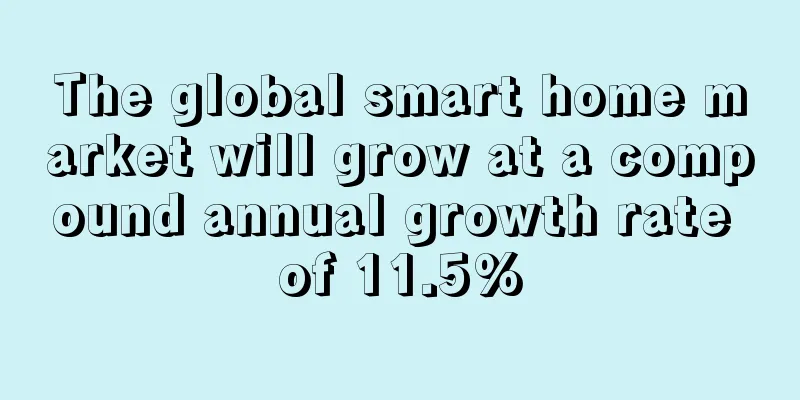The global smart home market will grow at a compound annual growth rate of 11.5%

|
Zion Market Research recently released a report stating: The global smart home device market size was US$68.8 billion in 2020 and is expected to reach US$156.6 billion by 2028, with a compound annual growth rate of 11.5% from 2021 to 2028 .
The report said the growth of the smart home industry is driven by a variety of factors, including the increase in Internet users, the popularity of smart devices, the increase in disposable income in developed economies , and the increasing demand for energy conservation and reduction of carbon emissions.
Due to the impact of the pandemic stay-at-home order , more and more people are staying at home and changing their living environment, thus adopting Internet of Things ( IoT ) technology. Long-term home life has changed the way people interact with their homes at home , causing them to rearrange their living space to meet new functional needs, such as working and studying at home, and discovering new ways to relax and enjoy themselves .
The growing need to save electricity and reduce carbon emissions is driving the smart home device market. Traditional devices consume electricity continuously when turned on . However, smart home devices are equipped with various sensors that can automatically shut down when they sense that the room is empty , saving money and energy.
The report shows that the smart home devices market in Europe accounted for more than 22% share in 2020. This is due to the increasing infrastructure investments in the region. The increase in demand for heating, ventilation, and air conditioning systems and energy management is driving the growth of the European market .
Smart TVs accounted for about 20% of the market in 2020. This is mainly due to the latest innovations in smart TV technology , such as the ability to run applications and operating systems , and consumers can now use smart TVs to search, chat, browse, publish, update, and download content.
Asia Pacific is expected to grow at a CAGR of over 12% during the forecast period . This surge is attributed to the increase in adoption of smart home devices resulting from technological advancements .
Security and access control systems will also grow at a compound annual growth rate of more than 12% . With the global crime rate rising , people are paying more and more attention to safety and security services, especially in residential areas. Home consumers prefer smart home devices such as smart locks, smart cameras, and smart lockers, which are safer and more reliable . Smart Home Internet of Things Smart TV |
>>: Sales of tourism equipment in Russia continue to grow
Recommend
Amazon training institutions are frantically cutting leeks, and students are threatened with account suspension when they fail to get their money back!
"In 2021, I feel embarrassed to tell others ...
Unable to repay debts! Shares of Cross-border Communication's largest shareholder were auctioned off by the court
Speaking of today's Cross-border Link, who ca...
Amazon is becoming more and more popular! Some mothers also want to start their own business
“Is there still a chance to do cross-border e-com...
What is Shenzhen Baiyusi Cross-border Logistics Co., Ltd.? Shenzhen Baiyusi Cross-border Logistics Co., Ltd. Review, Features
Shenzhen PGSEXP Logistics Co., Ltd. (PGSEXP) is a ...
Holi is coming! These products are the most popular during the Indian New Year
India is one of the countries with the most festi...
Supply chain is tight! Amazon UK will start Christmas activities 4 weeks early
People familiar with the matter revealed that Ama...
What is Go Sport? Go Sport Review, Features
Go Sport is a well-known French chain of sporting...
Grasp the traffic code! eBay announces the best-selling categories in 2021
As a global e-commerce giant, eBay has a large nu...
What is Junyu Logistics? Junyu Logistics Review, Features
Junyu Logistics is a diversified, international, ...
What is Ten Thousand? Ten Thousand Review, Features
Ten Thousand creates equipment worthy of the world...
What is Monetix Wallet? Monetix Wallet Review, Features
Monetix Wallet is a secure and convenient digital...
What is Amazon Global Selling
Global Selling is a project launched by Amazon to...
What is BKM Express? BKM Express Review, Features
BKM Express is Türkiye's national digital wall...
Layoffs at the end of the year! A number of operators have lost their jobs
The end-of-year personnel movement is in progress...
eBay UK sellers increased by 237%, one every two minutes
eBay UK recently issued an announcement stating t...









